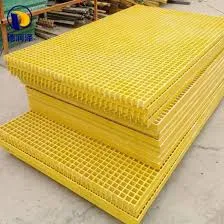
-
 Afrikaans
Afrikaans -
 Albanian
Albanian -
 Amharic
Amharic -
 Arabic
Arabic -
 Armenian
Armenian -
 Azerbaijani
Azerbaijani -
 Basque
Basque -
 Belarusian
Belarusian -
 Bengali
Bengali -
 Bosnian
Bosnian -
 Bulgarian
Bulgarian -
 Catalan
Catalan -
 Cebuano
Cebuano -
 China
China -
 China (Taiwan)
China (Taiwan) -
 Corsican
Corsican -
 Croatian
Croatian -
 Czech
Czech -
 Danish
Danish -
 Dutch
Dutch -
 English
English -
 Esperanto
Esperanto -
 Estonian
Estonian -
 Finnish
Finnish -
 French
French -
 Frisian
Frisian -
 Galician
Galician -
 Georgian
Georgian -
 German
German -
 Greek
Greek -
 Gujarati
Gujarati -
 Haitian Creole
Haitian Creole -
 hausa
hausa -
 hawaiian
hawaiian -
 Hebrew
Hebrew -
 Hindi
Hindi -
 Miao
Miao -
 Hungarian
Hungarian -
 Icelandic
Icelandic -
 igbo
igbo -
 Indonesian
Indonesian -
 irish
irish -
 Italian
Italian -
 Japanese
Japanese -
 Javanese
Javanese -
 Kannada
Kannada -
 kazakh
kazakh -
 Khmer
Khmer -
 Rwandese
Rwandese -
 Korean
Korean -
 Kurdish
Kurdish -
 Kyrgyz
Kyrgyz -
 Lao
Lao -
 Latin
Latin -
 Latvian
Latvian -
 Lithuanian
Lithuanian -
 Luxembourgish
Luxembourgish -
 Macedonian
Macedonian -
 Malgashi
Malgashi -
 Malay
Malay -
 Malayalam
Malayalam -
 Maltese
Maltese -
 Maori
Maori -
 Marathi
Marathi -
 Mongolian
Mongolian -
 Myanmar
Myanmar -
 Nepali
Nepali -
 Norwegian
Norwegian -
 Norwegian
Norwegian -
 Occitan
Occitan -
 Pashto
Pashto -
 Persian
Persian -
 Polish
Polish -
 Portuguese
Portuguese -
 Punjabi
Punjabi -
 Romanian
Romanian -
 Russian
Russian -
 Samoan
Samoan -
 Scottish Gaelic
Scottish Gaelic -
 Serbian
Serbian -
 Sesotho
Sesotho -
 Shona
Shona -
 Sindhi
Sindhi -
 Sinhala
Sinhala -
 Slovak
Slovak -
 Slovenian
Slovenian -
 Somali
Somali -
 Spanish
Spanish -
 Sundanese
Sundanese -
 Swahili
Swahili -
 Swedish
Swedish -
 Tagalog
Tagalog -
 Tajik
Tajik -
 Tamil
Tamil -
 Tatar
Tatar -
 Telugu
Telugu -
 Thai
Thai -
 Turkish
Turkish -
 Turkmen
Turkmen -
 Ukrainian
Ukrainian -
 Urdu
Urdu -
 Uighur
Uighur -
 Uzbek
Uzbek -
 Vietnamese
Vietnamese -
 Welsh
Welsh -
 Bantu
Bantu -
 Yiddish
Yiddish -
 Yoruba
Yoruba -
 Zulu
Zulu
Innovative Design of FRP Rectangular Tanks for Efficient Fluid Storage Solutions
Understanding FRP Rectangular Tanks Applications, Benefits, and Design Considerations
FRP, or Fiber Reinforced Plastic, tanks have gained significant attention in various industries due to their lightweight, durability, and corrosion-resistant properties. Among the different shapes used in tank design, rectangular tanks have proven to be particularly effective for a variety of applications. In this article, we will explore the structure, benefits, and common applications of FRP rectangular tanks, as well as key design considerations when opting for this type of tank.
Structure and Composition
FRP rectangular tanks are constructed from a composite material that combines a polymer matrix with fibrous materials. The fibers, often made from glass, provide strength and rigidity, while the polymer offers resistance to chemical corrosion and environmental stress. The rectangular shape of these tanks allows for efficient use of space, making them suitable for both above-ground and below-ground applications.
Benefits of FRP Rectangular Tanks
1. Lightweight One of the primary advantages of FRP tanks is their lightweight nature compared to traditional materials like concrete or steel. This characteristic significantly reduces transportation costs and simplifies installation, particularly in locations where accessibility is limited.
2. Corrosion Resistance FRP is highly resistant to a wide range of chemicals, making these tanks ideal for storing substances that would typically corrode metal tanks. This property extends the lifespan of the tanks and reduces the need for costly maintenance.
3. Versatility FRP rectangular tanks can be custom-designed to meet specific application requirements. They are suitable for various industries, including water treatment, chemical processing, and food and beverage production.
4. Cost-Effectiveness Although the initial investment might be higher than traditional options, the long-term savings from reduced maintenance and replacement costs often make FRP tanks a more economical choice.
5. Thermal Insulation Depending on the manufacturing process, FRP tanks can offer good thermal insulation properties, which is crucial for industries dealing with temperature-sensitive materials.
Applications
FRP rectangular tanks are widely used in multiple sectors due to their versatile design and exceptional properties
. Common applications includefrp rectangular tank

- Water and Wastewater Treatment These tanks are often utilized for storing treated or untreated water, as well as chemicals used in the treatment process. Their ability to resist corrosion ensures durability in challenging environmental conditions.
- Chemical Processing In industries that handle aggressive chemicals, FRP rectangular tanks provide a safe storage solution, minimizing the risk of leaks and contamination.
- Food and Beverage Industry The non-reactive nature of FRP materials makes these tanks suitable for storing food-grade liquids, including juices, syrups, and other processed products.
- Agriculture Farmers utilize FRP tanks for irrigation and water storage, taking advantage of their lightweight and corrosion-resistant characteristics.
Design Considerations
When designing or selecting an FRP rectangular tank, several factors must be taken into account
1. Load Requirements Ensure the tank can support the weight of the contents and any environmental stresses, such as wind or seismic activity.
2. Chemical Compatibility The materials used in the tank construction should be compatible with the stored substances to avoid degradation or failure.
3. Ventilation and Drainage Proper design should include ventilation and drainage systems to prevent pressure buildup and facilitate easy cleaning.
4. Regulatory Standards Compliance with local and industry-specific regulations is crucial to ensure safety and operational efficiency.
Conclusion
FRP rectangular tanks represent a modern solution to the challenges posed by traditional storage options. Their lightweight, corrosion-resistant, and versatile characteristics make them indispensable across various industries. By considering the specific needs and applications, businesses can optimize their use of FRP rectangular tanks for efficient and effective storage solutions. As technology and materials science continue to advance, the future of tank design looks bright, with FRP leading the way in innovation and sustainability.









